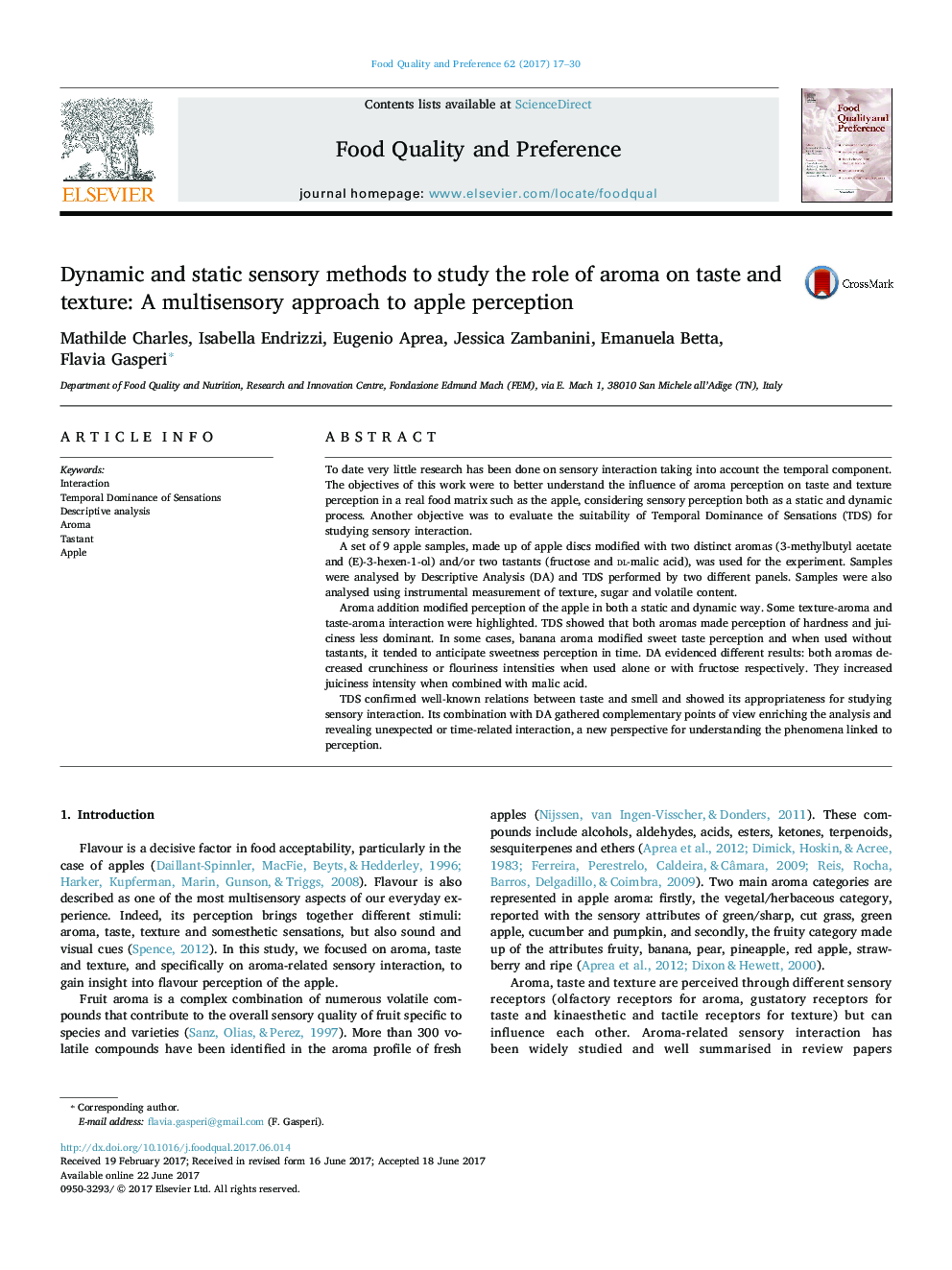| Article ID | Journal | Published Year | Pages | File Type |
|---|---|---|---|---|
| 5736008 | Food Quality and Preference | 2017 | 14 Pages |
â¢A 'dipping in solution' technique to modify aroma in a real food matrix is proposed.â¢Both TDS and DA methods allowed identification of aroma-related interaction.â¢TDS provided time-related information relative to sensory interaction.â¢Fruity and vegetal aromas modified perception of taste and texture in apple.
To date very little research has been done on sensory interaction taking into account the temporal component. The objectives of this work were to better understand the influence of aroma perception on taste and texture perception in a real food matrix such as the apple, considering sensory perception both as a static and dynamic process. Another objective was to evaluate the suitability of Temporal Dominance of Sensations (TDS) for studying sensory interaction.A set of 9 apple samples, made up of apple discs modified with two distinct aromas (3-methylbutyl acetate and (E)-3-hexen-1-ol) and/or two tastants (fructose and dl-malic acid), was used for the experiment. Samples were analysed by Descriptive Analysis (DA) and TDS performed by two different panels. Samples were also analysed using instrumental measurement of texture, sugar and volatile content.Aroma addition modified perception of the apple in both a static and dynamic way. Some texture-aroma and taste-aroma interaction were highlighted. TDS showed that both aromas made perception of hardness and juiciness less dominant. In some cases, banana aroma modified sweet taste perception and when used without tastants, it tended to anticipate sweetness perception in time. DA evidenced different results: both aromas decreased crunchiness or flouriness intensities when used alone or with fructose respectively. They increased juiciness intensity when combined with malic acid.TDS confirmed well-known relations between taste and smell and showed its appropriateness for studying sensory interaction. Its combination with DA gathered complementary points of view enriching the analysis and revealing unexpected or time-related interaction, a new perspective for understanding the phenomena linked to perception.
